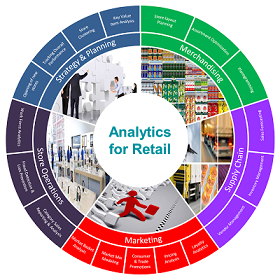Retail Analytics, a new tool in the hands of businesses
 Data collection for observation and prediction of consumer behavior is an instrument that it is used for a long time now. Until now it has been restricted only to digital world and the outcome was useful results to be ignored related to the condition in physical shops.
Data collection for observation and prediction of consumer behavior is an instrument that it is used for a long time now. Until now it has been restricted only to digital world and the outcome was useful results to be ignored related to the condition in physical shops.
This trend is starting to change because customers are better informed and demand from companies convenience, cooperation, consistency and flexible adaption to their unique, personal needs. Owners using retail analytics can now know if their marketing strategy is the appropriate and if the entrance of a customer to their shop leads to the desired result, sale.
But what is Retail Analytics and which are its practical uses? Using this method we can compare daily attendance to our shop with our sales percentage, having this way a concreate image of our success or failure. In this way businesses can optimize their products or given services as well as having a better view of their target group.
The most common types of Retail Analytics are:
- People counting: It gives information about the number of visitors in any given time. Combined with sales data, the shop owner may know how many of these visits have been transformed into sales.
- Ηot Ζone and Dwell Time: It records which place of the shop visit customers and how long they stay in it. Helps with the better design of the shop and the more appropriate product placement.
- Consumer behavior: It’s the type of research that records consumers’ reaction to products and advertisements. It leads to a better understanding of the factors influencing buying a product.
- Gaze Analysis: With this method and watching where a person is looking, for example using a Point-of- sale screen, we have the opportunity to record where exactly the customer turns his attention into. So, it is possible to place our products to a better place.
- Demographics: The use of consumer demographic data helps to a better targeting not only of our marketing strategy as well as our advertising campaigns.
